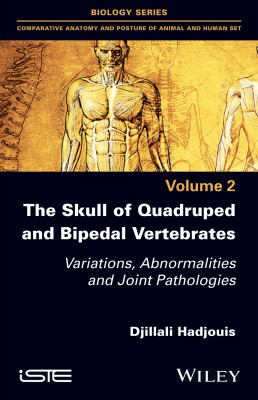
This book forms part of the set, Comparative Anatomy and Posture of Animal and Human, and focuses on the skulls of Quaternary mammals and of Man since the acquisition of upright posture.
Although the vast majority of the quadruped fossil species have a balanced postural adaptation, with no asymmetries or maxillo-mandibular dysmorphoses, the Hominine species that has acquired this readjustment of the body as well as a bipedal adaptation to the ground, will experience a series of postural imbalances starting with malocclusion in the genus Homo.
In order to arrive at this conclusion, the cranio-facial architectural biodynamics of several species of fossil and current mammals have been analyzed over three decades. In addition, hundreds of skulls of anatomically modern Hominids have been examined, highlighting their occlusal offsets, variations, anomalies and pathologies.
Part 1. The Skull of Fossil and Present-day Quadruped Vertebrates: Craniofacial Structure and Postural Balance
1. Proboscideans: The Mammoth (Mammuthus primigenius).
2. Equidae.
3. Bovidae.
4. Cervidae.
5. Suidae.
6. Carnivores.
7. Lagomorphs: The Hare (Lepus capensis).
Part 2. The Skull of Fossil Bipedal Vertebrates: Craniofacial Structure and Postural Balance
8. Primates.
9. Hominoids.
10. From Hominoids to Hominids.
11. Australopithecus.
12. The Genus Homo.
13. Migration and Paleogeographic Distribution of the Homininae.
Part 3. The Skull of Homo sapiens in All its Diversity
14. The Craniofacial Puzzle in Motion.
15. The Basics of Structural Analysis.
16. Identification of Malformation.
17. Ignored Pathologies.
Djillali Hadjouis is a specialist in human and animal anatomy of populations of the past. He has been, in turn, associate professor at universities, research director, departmental archaeologist and lecturer, training dozens of students from Europe, Africa and Asia.